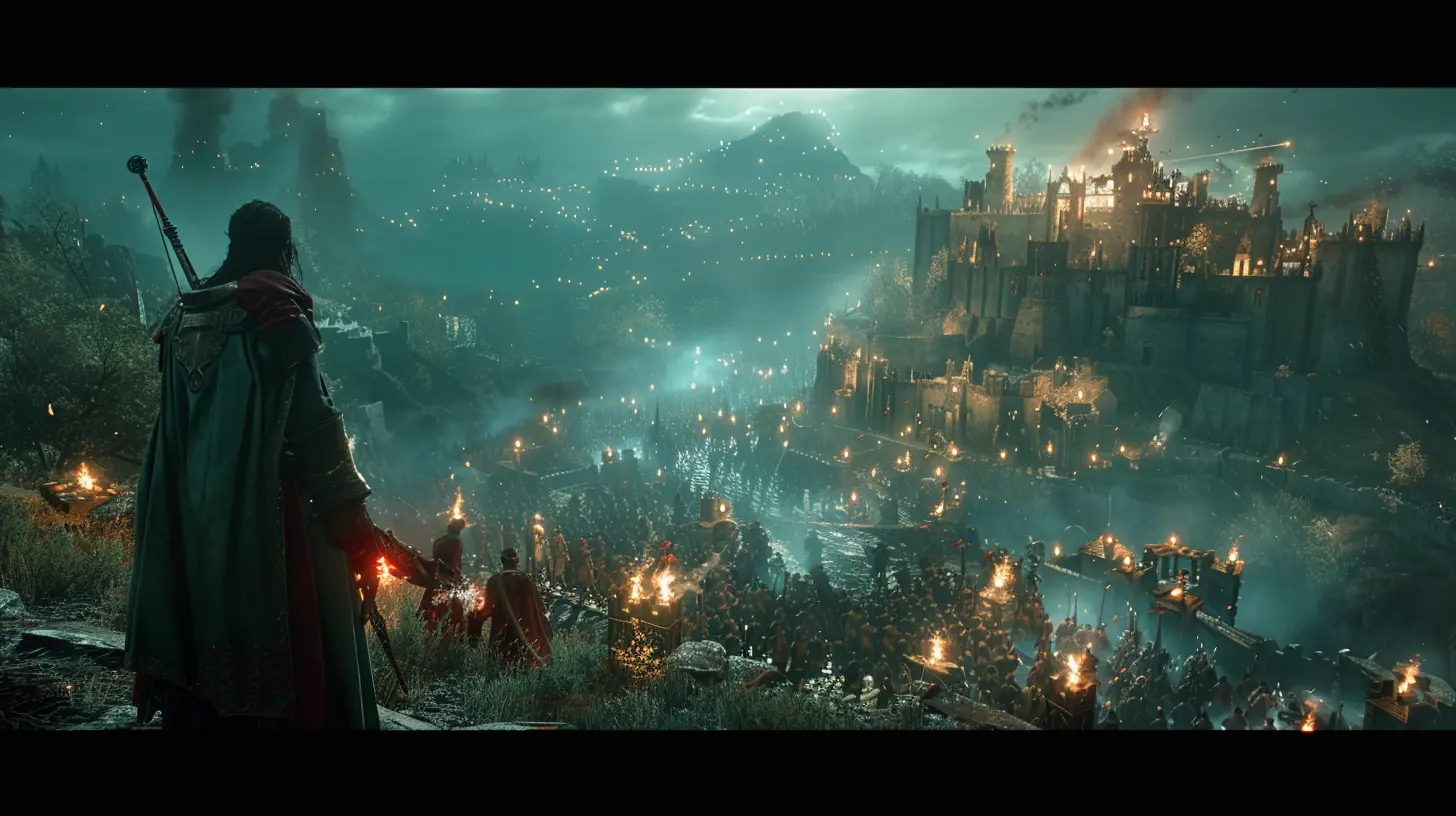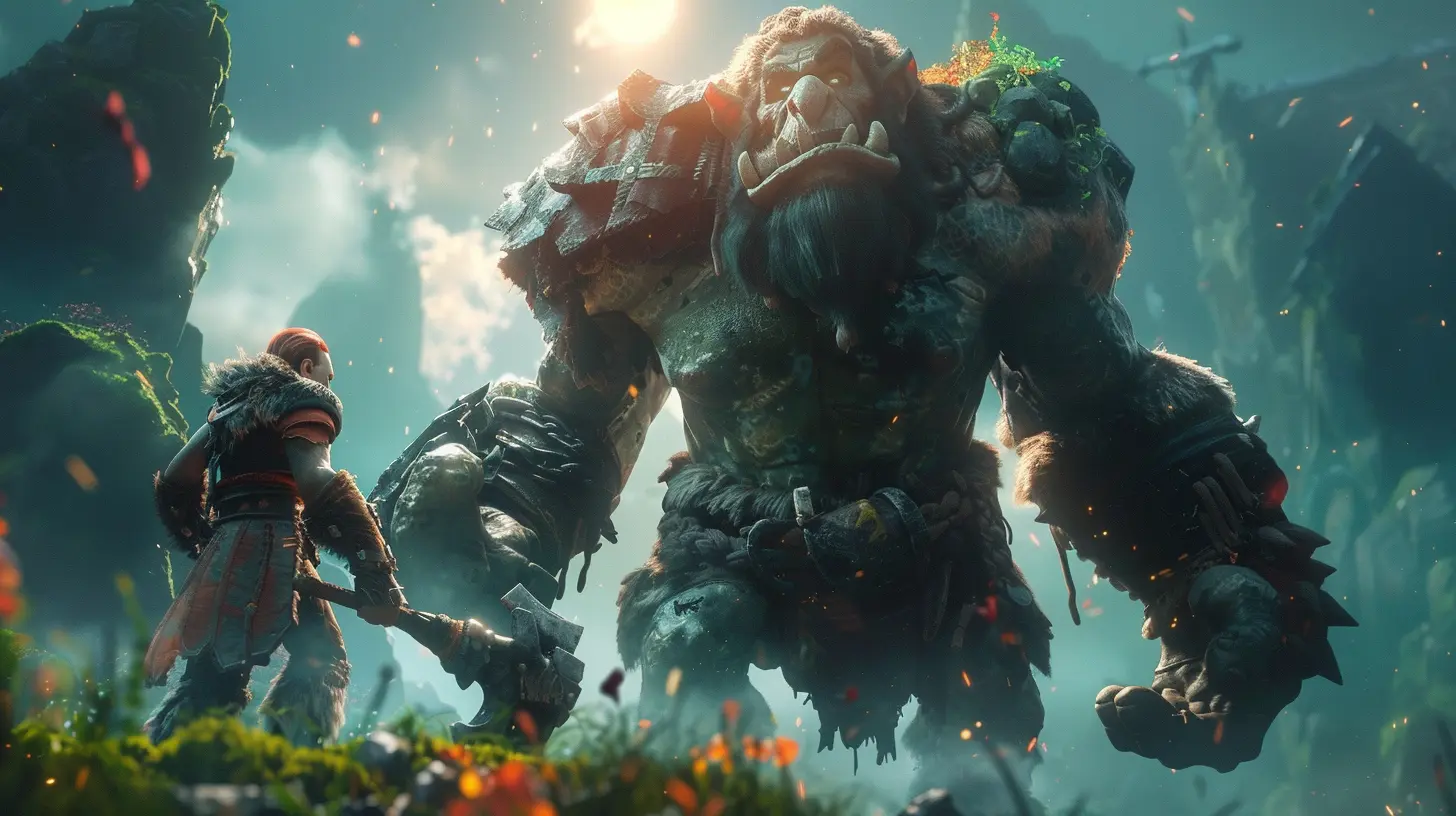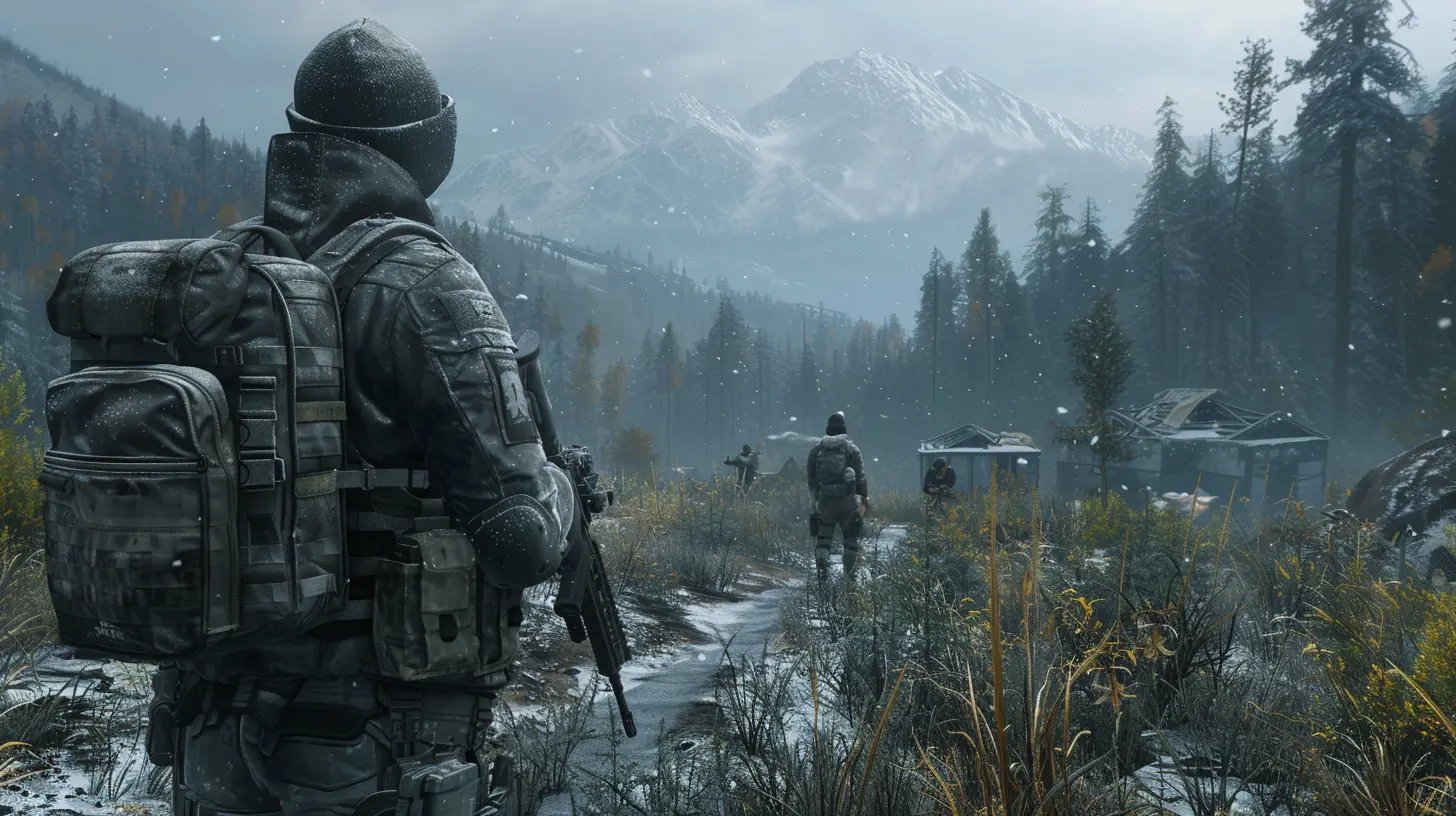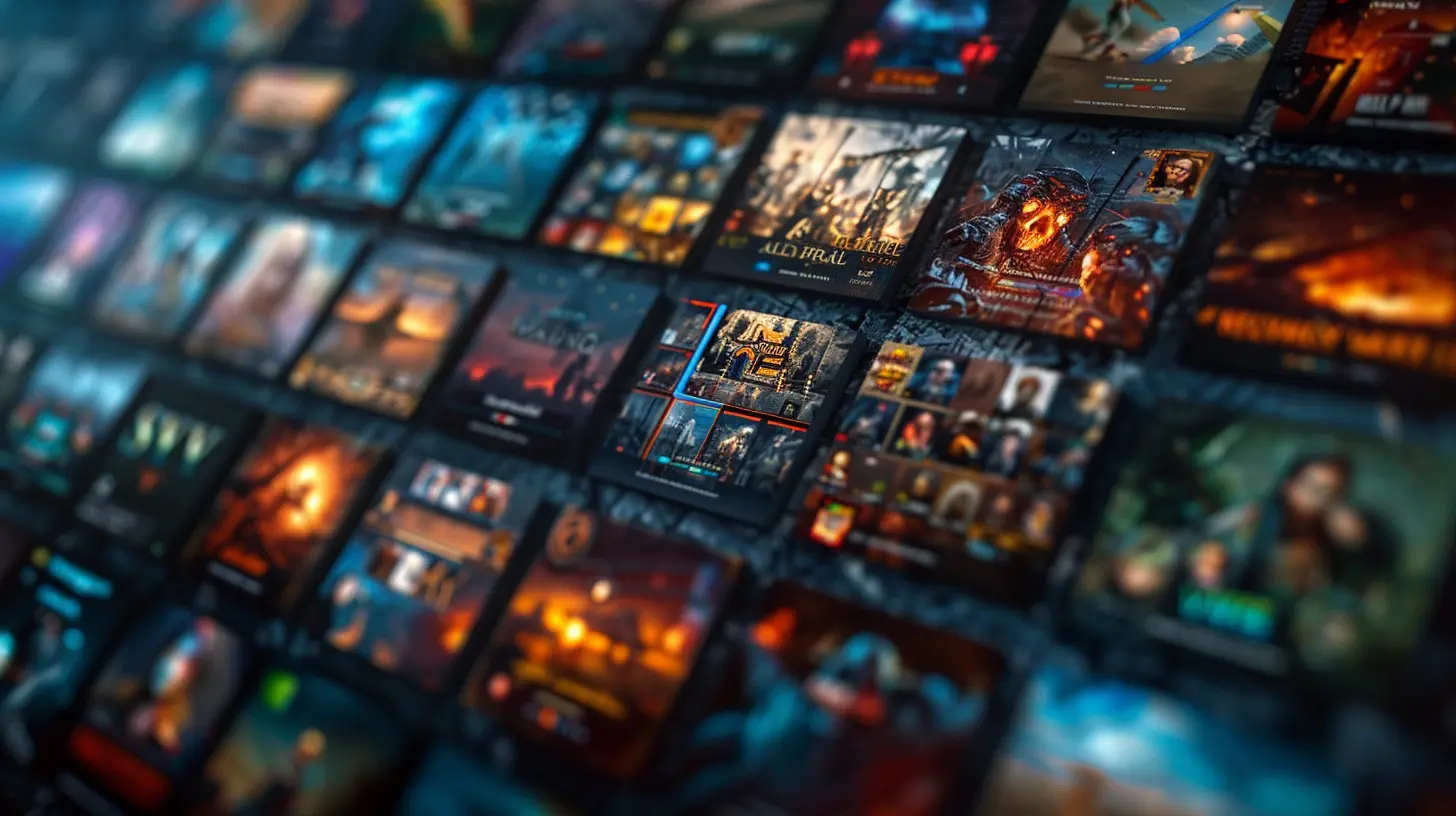How Multiplayer Gameplay Has Evolved Post-Update
24 October 2025
Have you ever logged into one of your favorite multiplayer games after a major update and thought—wait, what just happened? Suddenly, your muscle memory is tripping over new mechanics, your lobby looks like it got a facelift, and those goofy bugs you used to laugh at with your friends? Gone. Welcome to the wild world of multiplayer evolution.
In this article, we’re diving deep into how multiplayer gameplay has transformed after updates—not just the boring patch notes, but how updates have reshaped the very soul of playing with and against real humans. From mechanics to matchmaking, from voice chat etiquette to meme-worthy chaos—let’s talk about how updates have taken multiplayer from "meh" to "madness" (the good kind).
The Update Era: When “Patch Notes” Became Must-Reads
Let’s face it: Back in the day, updates were a couple of megabytes and maybe fixed a glitch where your character’s head would disappear in cutscenes. Fast-forward to now, and patch notes read like small novels. Entire metas shift, maps get dramatic overhauls, and sometimes, it’s like you’re playing a whole new game.If you’re like me (i.e., someone who religiously scans patch notes like they’re secret treasure maps), you know how one line—"improved hit registration"—can change your KD ratio forever. Updates today aren’t just tweaks; they’re game-changers.
Matchmaking 2.0: No More Rage Quitting—Well, Almost
Remember when matchmaking meant joining a server and praying you didn’t get steamrolled by a bunch of sweaty pros? Back then, skills mismatches were the norm. Now, post-update matchmaking systems use complex algorithms, player data, and even your internet speed to balance teams more effectively.Some games, like Apex Legends and Valorant, have updated matchmaking post-launch to better reflect player skill, reducing the number of frustrating blowouts. For casual players, this is a blessing. For smurfs? Not so much.
So yeah, you might still rage quit—but now it’s probably your fault. 😅
Communication Upgrades: Ping It, Don’t Sing It
Once upon a time, if you had no mic, you were practically useless in team-based games. But post-update multiplayer systems have introduced non-verbal communication features that are downright genius.Ever try Apex’s ping system? It’s basically your non-verbal best friend—ping to show enemies, items, or suggest strategy, all with a flick of your analog stick or mouse. Updates in games like Overwatch 2 and Rainbow Six Siege now include similar systems.
This makes teaming up with strangers way less chaotic, and hey, nobody’s yelling at you in voice chat. That’s an upgrade in EVERY sense.
Map Refreshes That Actually Matter
"New map!" used to mean "same layout, different paint job." But post-update, developers are doing more than just reskinning terrain—they’re rethinking how we play entirely.Take Fortnite, for example. With every season’s update, it’s not just new areas; it’s new traversal mechanics, weapons that change the flow of battle, even environmental hazards that make the map itself a worthy opponent.
These wild updates make every drop feel fresh, and if you're anything like me, sometimes you just land in your favorite POI (point of interest) to check what’s changed. It’s not just a game anymore—it’s a living, breathing place.
Role Evolution: No More “Just Run and Gun”
Multiplayer roles used to be super basic. You’re the tank, I’m the DPS, let’s go. But updates have added layers to these roles that force players to adapt (and complain, naturally).Games like League of Legends, Dota 2, and even MMORPGs like Final Fantasy XIV constantly tweak character abilities, buffs, and nerfs in ways that shake up the role dynamic. Tanks can suddenly do damage, support classes become offensive juggernauts—your old playstyle may just become obsolete overnight.
But that’s the magic, right? Post-update gameplay forces you to evolve or get left behind. Adapt or uninstall, baby.
Game Modes Galore: Chaos, But Make It Fun
Remember when multiplayer had like… three modes? Deathmatch, Capture the Flag, Team Deathmatch. Rinse, repeat. Now? Oh boy.Post-update multiplayer is where developers get to throw spaghetti at the wall and see what sticks.
From Among Us-style deception games popping up in Fortnite, to Rocket League’s “Heatseeker” mayhem mode, updates are now playgrounds of madness. Temporary modes allow devs to experiment—while we, the players, either love it or scream on Reddit.
These side modes bring the party vibe back to multiplayer and give you the perfect excuse to drag your reluctant, non-gamer friend into something less “hardcore” but still wildly fun.
Cross-Platform and Cross-Progression: Say Goodbye to Platform Wars
Thank the digital heavens—modern updates have blown the doors wide open for cross-play. Whether you’re on PC, Xbox, PlayStation, or Nintendo Switch, post-update multiplayer now often means uniting with (or against) your friends across devices.Just a few years ago, that was pipe dream material. Now, games like Warzone, Fortnite, and Minecraft let you play together no matter the controller in your hand.
And yep, cross-progression is the icing on the cake. One battle pass, one account, platform doesn’t matter. If you’re investing time and cash into a game, updates finally make that effort universal. About time, right?
Customization and Character Expression, Turned to 11
Who doesn't love a good skin? (No, not the IRL kind. We’re talking digital drip.)Post-update multiplayer experiences now include ridiculous levels of customization—skins, emotes, voice lines, weapon charms, and even profile banners that scream “I was here before it was cool.”
What used to be a humble color change is now a battle of who can wear the most outrageous outfit while still top-fragging. These updates are letting players bring their personality into the game, and honestly, it makes matches more fun. Nothing like getting stomped by someone wearing a hot pink unicorn costume to keep you humble.
Balancing Acts: The Nerf Hammer Swings Wildly
If you've ever been heartbroken by your favorite weapon getting nerfed, blame the update gods. Post-update balancing is a double-edged sword—it keeps things fair but also sends shockwaves through entire communities.Meta evolves fast, and so do the strategies. That overpowered shotgun you loved? It’s basically a Nerf dart shooter now. That underdog character? Beast mode unlocked.
Games like Call of Duty, Apex, and Valorant constantly tinker with balance based on player feedback, performance metrics, and good ol’ gut feelings (probably). While we grumble, deep down we get it—it keeps things spicy.
Social Integration: From Game to Hangout Spot
Ever played a multiplayer game just to… chill? Yeah, same. Updates now embed social features so well that multiplayer games are doubling as hangout spots.Destiny 2 has dance parties in the Tower. Fortnite has live concerts. Animal Crossing is basically virtual therapy with friends. These updates inject vibes into competition-heavy spaces and let players unwind with their community.
It’s no longer just “play to win” but “play to vibe”—and that’s a beautiful evolution.
The Rise of Live Service Models
Say what you want about battle passes and FOMO-fueled skins, but live service models are here to stay—and they’re shaping multiplayer gameplay like never before.Post-update, the term "endgame" doesn’t mean what it used to. Games are constantly fed with patches, events, seasonal rewards, lore drops, and content that keeps you coming back—not for just the competition, but the evolving story.
Is it manipulative marketing? Sure.
Does it work? Absolutely.
Are we mad about it? Only when we miss a limited-time skin.
Quality of Life Tweaks We Didn't Know We Needed
Sometimes, it’s the little things that make post-update multiplayer magic.- Auto-loot systems
- Better HUD customization
- In-depth stat tracking
- Reports and mute systems that actually work
These aren’t flashy, but they dramatically improve the multiplayer experience. If you’ve ever shouted "finally!" after an update, yup, you know exactly what I’m talking about.
Final Thoughts: Multiplayer Isn’t Just Better—It’s Personal
Multiplayer gameplay in the post-update world isn’t just about headshots and victory royales. It’s about community. It’s about evolution. It’s about laughing in a squad chat after pulling off the dumbest win imaginable.Thanks to constant updates, multiplayer games no longer get stale—they get richer, deeper, and weirder (in the best way).
So next time you see that loading screen and a massive update bar, don’t groan. Get hyped. Because who knows what’s about to change—you might just fall in love with the game all over again.
all images in this post were generated using AI tools
Category:
Game UpdatesAuthor:

Avril McDowney
Discussion
rate this article
1 comments
Tamara Cantu
Great insights! It's fascinating to see how multiplayer dynamics have transformed lately.
October 24, 2025 at 3:39 PM

Avril McDowney
Thank you! I'm glad you found the insights interesting—multiplayer dynamics are indeed evolving rapidly!


